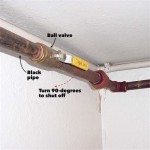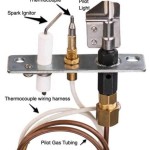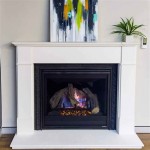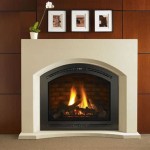Choosing the Right Paint for Your Brick Fireplace
A brick fireplace can be a striking focal point in a living space, offering both warmth and visual appeal. However, an outdated or poorly maintained fireplace can detract from a room's aesthetic. Painting a brick fireplace is a common and effective way to update its appearance, but selecting the appropriate type of paint is crucial for achieving a long-lasting and visually pleasing result. The inherent properties of brick, including its porosity and exposure to heat, demand a specific approach to paint selection and application. Using the wrong type of paint can lead to peeling, cracking, and discoloration, ultimately damaging the brick and requiring costly repairs.
The selection process should involve considering the brick's condition, the desired aesthetic, and the fireplace's usage. Furthermore, proper preparation of the brick surface is just as important as the paint itself. This involves cleaning, repairing any damage, and applying a primer suitable for brick. Neglecting these steps can compromise the paint's adhesion and longevity. This article provides a comprehensive guide to choosing the most suitable paint for a brick fireplace, covering various paint types, their advantages and disadvantages, and essential preparation techniques.
Understanding Brick's Characteristics
Brick is a porous material, meaning it contains numerous tiny holes and channels. This porosity allows brick to absorb moisture, which can expand and contract with temperature changes and varying humidity levels. Paint applied to brick must be able to withstand these fluctuations. If the paint is not breathable, moisture trapped within the brick can cause the paint to blister and peel. Therefore, selecting a breathable paint is essential.
Furthermore, fireplaces are subject to high temperatures, especially around the firebox. The paint chosen should be able to withstand these temperatures without significant discoloration or degradation. Standard interior paints are generally not suitable for use on the firebox itself, as they may release harmful fumes when heated. Heat-resistant paints specifically designed for fireplaces or stoves are required for these areas. Finally, brick surfaces can be rough and uneven, which can affect the paint's coverage and finish. A primer is often necessary to create a smooth, uniform surface for painting.
Exploring Suitable Paint Types
Several types of paint are suitable for brick fireplaces, each offering unique advantages and disadvantages. The most common choices include latex paint, acrylic paint, mineral paint, and specialized high-temperature paint. The selection depends on the desired finish, the level of durability required, and the specific area of the fireplace to be painted.
Latex Paint: Latex paint is a water-based paint known for its ease of use, low odor, and quick drying time. It is a popular choice for interior painting projects, including brick fireplaces. Latex paint is relatively breathable, allowing moisture to escape from the brick. However, standard latex paint is not as durable as some other options and may not withstand high temperatures or frequent cleaning. For brick fireplaces, a high-quality acrylic latex paint is recommended for improved durability and resistance to cracking and peeling.
Acrylic Paint: Acrylic paint is another water-based option that offers superior durability and adhesion compared to latex paint. It forms a more flexible film that can better withstand the expansion and contraction of brick. Acrylic paint is also more resistant to fading and staining, making it a good choice for areas that are prone to spills or dirt. Like latex paint, acrylic paint is relatively easy to apply and clean up.
Mineral Paint: Mineral paints, such as lime wash and silicate paints, are specifically formulated for use on porous surfaces like brick. These paints penetrate the brick rather than forming a surface coating, allowing the brick to breathe naturally. Mineral paints are highly durable and resistant to moisture, mold, and UV damage. They also offer a unique, matte finish that complements the natural texture of brick. However, mineral paints can be more expensive and require a more specialized application process compared to latex or acrylic paints.
High-Temperature Paint: For the firebox itself (the interior of the fireplace), a specialized high-temperature paint is essential. These paints are designed to withstand extreme heat without blistering, cracking, or releasing harmful fumes. High-temperature paints are typically available in aerosol cans and come in limited color options, usually black or gray. It is crucial to use a paint specifically labeled for use in fireplaces or stoves to ensure safety and longevity. These paints are formulated with special resins that can withstand temperatures up to 1200 degrees Fahrenheit or higher.
Essential Preparation Techniques
Proper preparation is crucial for achieving a successful and long-lasting paint job on a brick fireplace. Neglecting this step can lead to poor adhesion, uneven coverage, and premature failure of the paint. The preparation process involves cleaning the brick, repairing any damage, and applying a suitable primer.
Cleaning the Brick: The first step is to thoroughly clean the brick surface. Use a wire brush and a solution of water and mild detergent to remove any dirt, dust, soot, and loose debris. For stubborn stains or efflorescence (a white, powdery deposit that can appear on brick), use a specialized brick cleaner or a solution of muriatic acid diluted with water. Always follow the manufacturer's instructions when using chemical cleaners and wear appropriate safety gear, including gloves and eye protection. After cleaning, rinse the brick thoroughly with clean water and allow it to dry completely before proceeding to the next step.
Repairing Damage: Inspect the brick for any cracks, chips, or missing mortar. Repair any damage using a patching compound specifically designed for masonry. For small cracks, use a flexible sealant. For larger cracks or missing mortar, use a mortar mix that matches the existing mortar in color and texture. Follow the manufacturer's instructions for mixing and applying the patching compound or mortar. Allow the repairs to dry and cure completely before proceeding.
Priming the Brick: Applying a primer is essential for creating a smooth, uniform surface for painting and improving the paint's adhesion. Choose a primer specifically designed for masonry or brick. These primers are formulated to penetrate the porous surface of the brick and create a strong bond. Apply the primer using a brush or roller, ensuring even coverage. Allow the primer to dry completely according to the manufacturer's instructions before applying the paint. A tinted primer can be helpful if you are planning to paint the brick a significantly different color, as it can improve the coverage of the topcoat.
The success of painting a brick fireplace depends not solely on the selected paint but also on the preparation work. A clean, repaired, and primed surface provides the optimal foundation for a durable and aesthetically pleasing finish. If not done properly, the paint will not adhere, resulting in peeling, cracking, and overall subpar results.
Application Techniques and Considerations
The application of paint to a brick fireplace involves several techniques to ensure a smooth, uniform, and long-lasting finish. The tools used, the number of coats applied, and the drying time between coats can all significantly impact the final result.
Tools and Equipment: For painting a brick fireplace, a combination of brushes and rollers is typically required. A high-quality paintbrush with synthetic bristles is ideal for cutting in around edges and corners, as well as for applying paint to uneven surfaces. A roller with a nap length appropriate for the brick's texture is best for covering large, flat areas. For very rough or porous brick, a longer nap roller may be necessary to ensure adequate paint penetration. Additionally, painter's tape should be used to protect surrounding surfaces, such as walls, mantels, and flooring. Drop cloths are essential for protecting the floor from paint splatters.
Number of Coats: Typically, two coats of paint are recommended for a brick fireplace. The first coat acts as a base layer, providing coverage and adhesion. The second coat ensures a uniform color and finish. Allow each coat to dry completely according to the manufacturer's instructions before applying the next coat. Applying multiple thin coats is preferable to applying one thick coat, as it reduces the risk of drips and runs.
Drying Time: Adequate drying time is crucial for achieving a durable and long-lasting finish. Follow the manufacturer's instructions for drying times between coats and for the final cure time before exposing the painted surface to heat or cleaning. Rushing the drying process can lead to poor adhesion and a compromised finish. Ideally, allow the painted fireplace to cure for at least 24 to 48 hours before using it.
Special Considerations: When painting a brick fireplace, it is important to work in a well-ventilated area. While many modern paints have low VOCs (volatile organic compounds), it is still advisable to open windows and doors to provide adequate ventilation. Additionally, consider the overall aesthetic of the room when choosing the paint color. A neutral color, such as white, gray, or beige, can create a clean and modern look, while a darker color can add drama and sophistication. However, dark colors may absorb more heat and may not be suitable for fireplaces that are frequently used. Finally, before painting the entire fireplace, it is always a good idea to test the paint on a small, inconspicuous area to ensure that the color and finish are satisfactory.

How To Paint A Brick Fireplace What Use Home With Janny

How To Paint A Brick Fireplace Picking The Best For Your Paintzen

How To Paint A Brick Fireplace Beamin Moore

How To Paint Your Brick Fireplace Katie Lamb

How To Paint A Brick Fireplace

Painting Brick Fireplace White A Renovation Story

Modern Rustic Update To Fireplace Paint And Wall Behr

How To Paint A Brick Fireplace Kippi At Home

How To Paint A Brick Fireplace Makeover Sherwin Williams

Paint Your Brick Fireplace In 2 Easy Steps Birkley Lane Interiors
Related Posts








